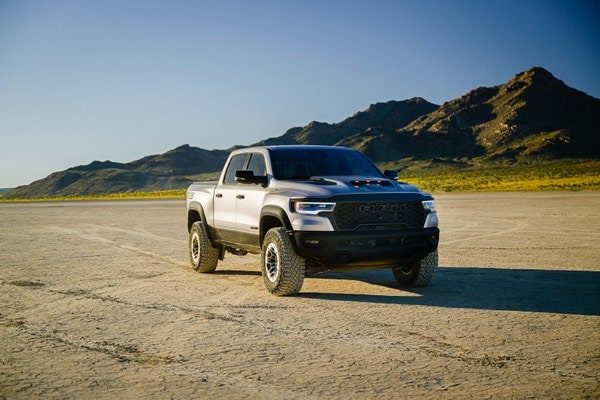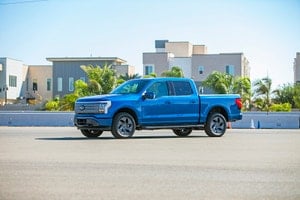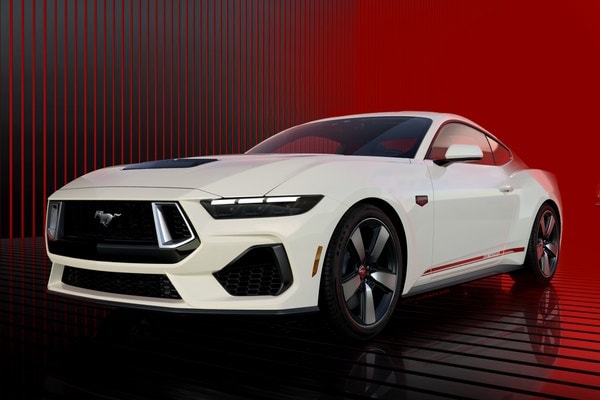Used 2012 Ford Transit Connect Wagon XLT Premium Minivan Review
Consumer reviews
There are no consumer reviews for the 2012 Ford Transit Connect Wagon XLT Premium Minivan.
Edmunds Summary Review of the 2012 Ford Transit Connect Wagon XLT Premium Minivan
Pros & Cons
- Pro:Easy to park and maneuver in tight spaces
- Pro:above average fuel economy
- Pro:large, versatile cargo area
- Pro:clever business-oriented electronics features.
- Con:Glacial acceleration
- Con:limited 1,600-pound payload capacity
- Con:subpar crash scores.
Full Edmunds Review: 2012 Ford Transit Connect Minivan
What’s new
Every Ford Transit Connect gets standard stability control for 2012.
Edmunds says
The 2012 Ford Transit Connect offers business owners an attractive alternative to larger, thirstier and more expensive cargo vans.
Vehicle overview
When gas prices rise, businesses everywhere watch their profits go out the door and into the pumps of gas stations across the country, especially if they are utilizing thirsty, V8-powered full-size vans to ferry equipment and merchandise. Clearly it would be nice if there was something smaller and more efficient for those who don't need a small bus to deliver cakes or repair satellite dishes. Thankfully, such a vehicle does exist: the 2012 Ford Transit Connect.
We'll admit that it's an odd little duck, resembling some sort of unholy spawn of an old Ford Fusion and a Dodge Sprinter. Yet this weird shape is quite space efficient, and its flat-paneled sides are perfect for affixing company graphics. On the inside, there are 135 cubic feet of cargo space, which is about 100 cubes shy of a Ford Econoline, but much easier to access because of the Transit Connect's low step-in height and taller interior. Wagon models also include a three-person bench should you need space for extra workers.
There are other advantages to its shape and size. The Transit Connect will easily fit in parallel parking spots that would leave an Econoline driver circling the block aimlessly searching for a suitable space. Handling is also an advantage, as this tiny van is more capable of maneuvering through traffic.
While the 2012 Ford Transit Connect represents an entirely new type of work van segment, it also introduces a variety of new features designed specifically for small businesses. Shelving units are a more basic option, while the Ford Work Solutions should appeal to more high-tech operations. These include an in-dash computer, a Garmin navigation system and Internet access. The Crew Chief tracks the vehicle's location, speed and idle time, making 3-hour lunches at Hooters a thing of the past. Finally, Tool Link by DeWalt keeps track of your tool inventory via radio frequency ID tags.
There are downsides, however. Its four-cylinder engine may be substantially more fuel-efficient than those V8-powered dinosaurs, but the Transit Connect is woefully underpowered for a vehicle of this size. Its compact cargo area and payload of 1,600 pounds might also limit its application for some. If those are concerns, a traditional-style van like the Chevy Express or new Nissan NV would work out better. You should also check out the minivan-based Ram C/V as another light-duty alternative. Yet for many businesses, the 2012 Ford Transit Connect is all the van you need to get the job done, and it saves you some dough along the way.
2012 Ford Transit Connect models
The 2012 Ford Transit Connect is a compact work van available in XL Van, XLT Van, XLT Wagon and XLT Premium Wagon trim levels. The primary difference between Van and Wagon trims is the presence of a second-row seat. All versions come with dual sliding side doors, but these can be deleted, as can the rear door glass.
Standard equipment on the XL Van includes 15-inch steel wheels, an integrated blind-spot mirror, rear privacy glass, air-conditioning, a height-adjustable driver seat with an armrest and lumbar adjustment, cloth upholstery, a tilt-and-telescoping steering wheel and a two-speaker radio. The Power Group adds keyless entry and full power accessories. The XLT includes the Power Group plus body-colored bumpers, a rear window defroster, heated mirrors, map lights, a 12-volt cargo area power point, a CD player and an auxiliary audio jack.
The Wagon version of the XLT gets foglights, a three-person rear bench seat and a four-speaker audio system. The XLT Premium gets special exterior trim, rear cargo door pocket storage and flip-open glass windows in the cargo area.
Options on all Transit Connects include an in-dash computer (featuring a touchscreen display, a Microsoft operating system, a wireless mouse and keyboard, a Garmin navigation system and Internet access) and the Crew Chief vehicle tracking system. Bluetooth can be added to the in-dash computer. The Van trims can also be equipped with the Tool Link by DeWalt tool tracking and inventory system. Fleet buyers can also add rear doors that open to 255 degrees, rear parking sensors and a rearview camera.




Performance & mpg
Every 2012 Ford Transit Connect features a 2.0-liter four-cylinder engine good for 136 horsepower and 128 pound-feet of torque. A four-speed automatic sends that power to the front wheels. In Edmunds performance testing, a Transit Connect went from a standstill to 60 mph in a very sluggish 12.6 seconds -- with an empty cargo bay. On the upside, EPA-estimated fuel economy is 21 mpg city/26 mpg highway and 23 mpg combined.
Safety
Standard safety equipment on every Transit Connect includes four-wheel antilock brakes (front discs, rear drums), traction and stability control, and front side airbags. In Edmunds brake testing, the Transit Connect gets to a stop from 60 mph in 135 feet, which is pretty good for a commercial vehicle.
In government crash tests, the Transit Connect received only two out of five stars for overall crash protection, with three stars for overall frontal protection and two stars for overall side-impact protection.
Driving
The 2012 Ford Transit Connect's tall and narrow dimensions make it easy to maneuver through narrow, urban streets that would leave an Econoline driver double-checking that his company's insurance is paid up. At 39 feet, its turning circle is incredibly small for something that can lug about 135 cubic feet of stuff. But while agility is good, quick it is not. The 2.0-liter four-cylinder engine that used to be stressed by the task of motivating the old, 2,642-pound Ford Focus is completely zonked in the 3,470-pound Transit Connect. And imagine how slow it would be loaded up with its maximum payload of 1,600 pounds.
Interior
Inside the cabin, the Transit Connect offers a carlike driving position. The overall look is utilitarian, though patterned upholstery fabric adds a nice touch. Climate and stereo controls are simple and straightforward. The in-dash computer (which includes a wireless keyboard) is bound to come in handy for folks who spend all day in the field, but it compromises the usability of some normal car functions such as the stereo.
When it comes to cargo capacity, the Transit Connect Van offers a healthy 135 cubic feet, which is about 100 cubic feet less than Ford's larger Econoline vans. However, the space is made more usable by a much lower step-in height, a flat load floor that measures 6 feet long and 4 feet wide, and a ceiling height of just less than 5 feet. Maximum payload is a modest 1,600 pounds.
For ferrying people, the Wagon's rear seats offer a firm seat bottom and reasonable elbow room. You're essentially sitting on a bench screwed into the cargo hold, however, and when you consider the lack of amenities, the Transit Connect is certainly better suited to work crews than families.
Edmunds Insurance Estimator
The Edmunds TCO® estimated monthly insurance payment for a 2012 Ford Transit Connect in Ohio is:
not availableRelated Used 2012 Ford Transit Connect Wagon XLT Premium Minivan info
Recent automotive news
- The 2025 Toyota Camry Is Still Affordable
- 2025 Mercedes-AMG GT 63 S E Performance Sets Sights on the 911 Turbo S
- Drag Race! Bentley Continental GT Speed Takes On the BMW M8 Competition
- 2024 Sierra EV Denali Edition 1 Gets Improved Range and Lower Price
- It's Been a Turbulent Journey With Our Long-Term Fisker Ocean
- 2024 Mercedes CLE Cabriolet First Drive: Weekend Luxury You Can Enjoy 7 Days a Week
- Lucid Air Grand Touring Gets Sapphire Parts for Improved Range, Charging
- Tesla Recalls Thousands of Cybertrucks Because 600-HP Pickup's Accelerator Pedal Can Stick
- 2024 Lucid Air Sapphire First Drive: The Power Isn't Even the Best Part
- 2025 Toyota Camry First Drive: Hybrid Hype, Fully Realized
Popular new car reviews and ratings
- CLS 550
- Lexus LC 500H
- Audi RS5 Car
- Audi RS6
- MC Laren Solus GT
- Fiat 500E Battery Electric
- Ford F450
- Audi RS 3
- Audi TT
- Volvo XC40 Volvo
Lease deals by make
- Audi Lease Deals
- Honda Lease Deals
- BMW Lease Deals
- GMC Lease Deals
- Chevrolet Lease Deals
- Genesis Lease Deals
- Ford Lease Deals
- Buick Lease Deals
- Hyundai Lease Deals
- Cadillac Lease Deals